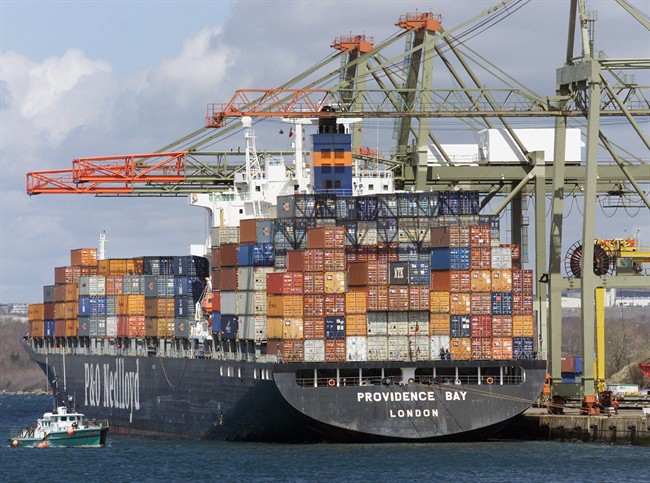Canadian exports bounced back in July, rising 3.4 per cent to $42.7 billion. The numbers are a positive sign the country’s economy is poised for a rebound, but economists say we still have a long way to go when looking at the long-term economic picture.

Statistics Canada released data Friday showing Canada’s trade deficit shrank in July to $2.49-billion, the smallest it’s been in six months, down from a record $3.97-billion in June.
READ MORE: Canada’s trade gap narrows in July as exports jump
Economists noted that the export growth was driven by non-energy exports, like car parts and industrial machinery, as nine of 11 sectors posted gains. Excluding energy products, exports were up 4.1 per cent.
Bank of Montreal senior economist Benjamin Reitzes said after an “absolutely horrendous” second quarter, trade has begun to improve.
“We’ll need to see some follow-through over the next couple of months, but this should ease some concern about health of the export sector,” Reitzes wrote in a research report.
However, Canada still has a long way to go when it comes to trade as exports have fallen seven per cent over the last 12 months, faster than the 2.6 per cent decline for imports, according to the latest Stats Can numbers.
Canadian productivity struggling
Ian Lee, a professor at Carleton University’s Sprott School of Business, said while the latest numbers suggest Canada could be turning a corner when it comes to trade, the economy as a whole still isn’t doing well.
Lee said that Canada’s falling exports year-over-year could be the result of our high unit labour costs, a metric that measures the price of labour per single unit of output. According to OECD, Canada has the fourth highest in the world
READ MORE: With GDP down, is Canada heading toward a financial crisis?
Statistics Canada also noted Friday that labour productivity of Canadian businesses fell by 0.3 percent in the second quarter of 2016, reflecting the damage caused by a major wildfire in Alberta.
The issue of low productivity is nothing new.
A 2014 study by the Mowat Centre at the University of Toronto found that Ontario has lost 300,000 manufacturing jobs over the past decade due to failure to “invest in productivity-enhancing innovation.”
Reitzes said the decade-long decline in the auto-sector is an example of Canada’s inability to remain competitive and signals the need to invest in new industries.
“Canada as a whole is still finding its way as to what products we are going to be competitive in,” he said. “I don’t think it’s going to be low-value added products, it has to be higher value added products, ones that involve more intellectual property, for example, and more high-tech expertise is where we should be focusing our efforts.”
*With a file from the Canadian Press




Comments